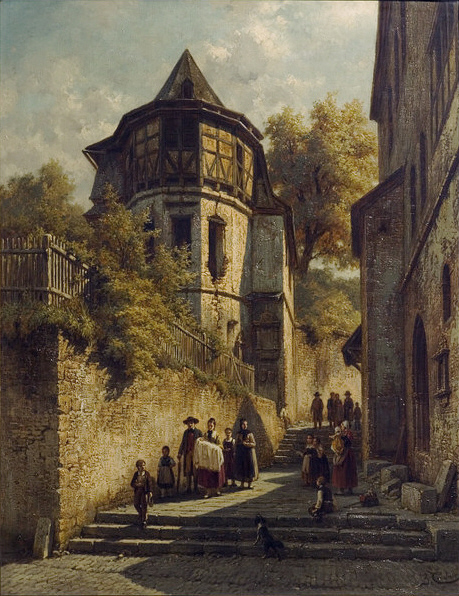
Christening Party at Bacharach, Germany. Oil painting by Jacques Carabain at the Victoria and Albert Museum.
The admirable teachings of Pius XII explain this difference [between people and masses] very well, clearly describing the natural concord that can and should exist between the elites and the people, contrary to the assertions of the prophets of class struggle.
Pius XII affirms in his 1944 Christmas radio message:
“The people, and a shapeless multitude (or, as it is called, “the masses”) are two distinct concepts.
1. The people lives and moves by its own life energy; the masses are inert of themselves and can only be moved from outside.
2. The people lives by the fullness of life in the men that compose it, each of whom—at his proper place and in his own way—is a person conscious of his own responsibility and of his own views. The masses, on the contrary, wait for the impulse from outside, an easy plaything in the hands of anyone who exploits their instincts and impressions; ready to follow in turn, today this way, tomorrow another
3. From the exuberant life of a true people, an abundant rich life is diffused in the state and all its organs, instilling into them, with a vigor that is always renewing itself, the consciousness of their own responsibility, the true instinct for the common good.”(1)
(1) Cf. Vincent A. Yzermans, ed., The Major Addresses of Pope Pius XII (St. Paul: North Central Publishing Co., 1961), Vol. 2, p. 81. The numbering and corresponding arrangement in separate paragraphs were added by this author to facilitate the reader’s analysis.
Plinio Corrêa de Oliveira, Nobility and Analogous Traditional Elites in the Allocutions of Pius XII: A Theme Illuminating American Social History (York, Penn.: The American Society for the Defense of Tradition, Family, and Property, 1993), 27-28.












